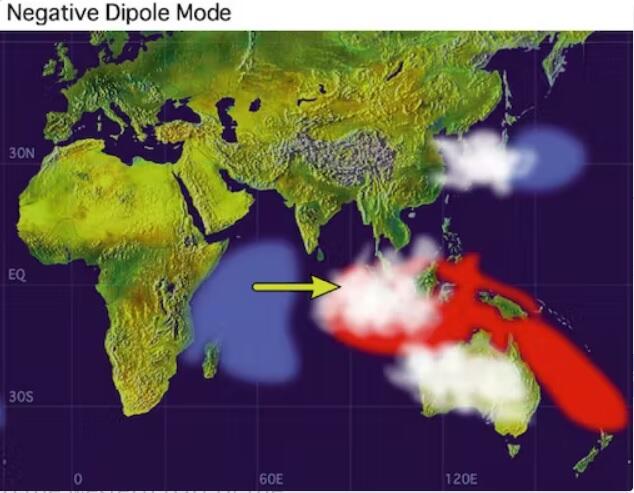A research group led by Senior Researcher Takeshi Doi of the Application Laboratory, Research Institute for Value-Added-Information Generation, Japan Agency for Marine-Earth Science and Technology (JAMSTEC) combined a seasonal forecasting system (SINTEX-F) with a statistical model that estimates rainfall fluctuations in East Africa to predict droughts that occur during East Africa's short rainy season (October to December), and succeeded in showing that these droughts could be predicted early.

Provided by JAMSTEC
In 2021, East Africa was hit by a severe drought that caused terrible damage to the region, including shortages of food and drinking water. Early prediction of such events is important to mitigate this kind of damage, but such early predictions are difficult. As such, the research group thought that this kind of damage could be mitigated if the onset of these drought could be predicted several months in advance. In order to achieve this, the group performed extensive calculations by combining ocean observation data, such as sea water temperature, with forecasting simulations that they had developed on a supercomputer (the source of which was the work of Yoshiro Manabe, who won the Nobel Prize in Physics in 2021).
The results showed that it was a negative Indian Ocean dipole event that caused the drought of 2021, and that by combining simulations with a statistical model that estimates precipitation variability in East Africa, the drought could have been predicted by as early as June. Early forecasting with this new hybrid forecasting system is extremely effective because it provides a preparation period to mitigate the enormous damage of the droughts.
Doi noted that, "There is still room for improving forecasting, and more research is needed to further improve forecasting accuracy. At the same time, because we can still make predictions to some extent, we would like to conduct social application research on how to use this information to mitigate the damage from droughts."
■ Indian Ocean Dipole (IOD) phenomenon: A climate variability phenomenon that develops in the tropical Indian Ocean when the ocean and atmosphere are linked and interact with each other. There are positive and negative events, and when a negative dipole event occurs, sea surface temperatures are higher than normal in the southeastern part of the tropical Indian Ocean and lower than normal in the western part. This temperature fluctuation causes convective activity, which is active in the eastern Indian Ocean even under normal conditions, to become even more active, and the heavy rains and floods tend to cause extensive damage in Indonesia, Australia, and other regions. On the other hand, it makes droughts and wildfires more likely to occur in East Africa.
Journal Information
Publication: Geophysical Research Letters
Geophysical Research Letters
Title: On the Predictability of the Extreme Drought in East Africa During the Short Rains Season
DOI: 10.1029/2022GL100905
This article has been translated by JST with permission from The Science News Ltd. (https://sci-news.co.jp/). Unauthorized reproduction of the article and photographs is prohibited.




